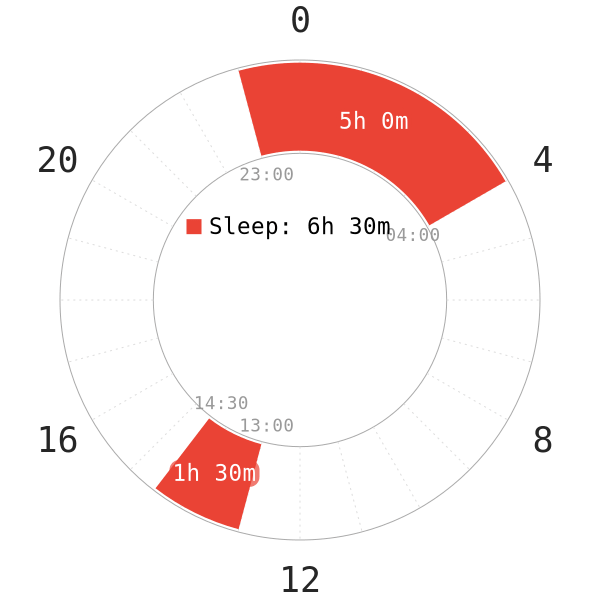
Siesta is one of the most popular sleep patterns in the world. It is a biphasic schedule with 2 sleep blocks each day. Most of the sleep goes into the night, while a longer “nap” duration is in the day. For consistency, Siesta sleep is one of the 5 polyphasic schedules with only core sleeps. It is also very well known with Spanish culture.
Content
- Mechanism
- Difficulty
- Alternate Variants
- Lifestyle Considerations
Mechanism
Siesta sleep shares a lot of similarities with E1. This is especially when research confirmed the existence of the circadian nadir around noon and early afternoon. Both Siesta and E1 then become very popular. However, it is most likely that humans naturally sleep in the non-reducing form of these schedules; meaning there is little to no sleep reduction involved.
In the case of Siesta, a longer sleep in the nadir region is preferable to the short nap of E1. In the context of polyphasic sleeping:
- Siesta contains 2 core sleeps. A bigger portion of total sleep is dedicated to nighttime, where there is a high need for a long rest.
- The daytime sleep lasts for 1 full cycle, with potentially higher restorative power than a short nap.
- The longer daytime sleep paves the way for shorter nocturnal sleep; this opens up for more evening time or earlier wake time in the morning.
- By having more than one core sleep, Siesta is capable of delivering very high sleep quality without compromising long-term health status. Usually, the wake gap from the end of the night core to the daytime core is anywhere between 6-9 hours.
- However, Siesta’s night core does not follow the 90m cycle rule. The default core duration is 5h rather than 4.5h.
The +30m from a 4.5h core can act as a statistically likely REM period; there is more room to get extra REM sleep in this 30m duration. Similar to the 6.5h core proposal of E1, the first 3 full cycles of sleep (4.5h) should cover all SWS with properly repartitioned sleep and proper sleep hygiene.
Adaptation Difficulty
Siesta over the years has reported a great amount of successful adaptations, with the majority coming from the non-reduced version. However, the standard version has overall less success.
- The sleep reduction mechanism plays into the adaptation. Not everyone can adapt to a reducing Siesta version.
- It is also likely that when adaptation first begins, waking up from the 5h core (rather than 4.5h) could be difficult with SWS wakes (SWS repartitioning in progress) or REM wakes.
- The statistically likely REM period can result in a dizzy REM wake. Over time, waking up from the main night core should no longer pose any serious problems; the night core should become refreshing and invigorating.
- For those who are never used to a long daytime sleep, it can still be difficult to first deal with the change in sleep habits.
Overall, the adaptation progress is mild, if not easier than E1 in some cases. The daytime core is generally easier to manage because of the strong alignment with the 90m cycle rule. With good time management, health and a functional alarm setup, most individuals should be able to adapt to the reducing Siesta version.
Alternate Variants
Over the years, a lot of Siesta sleepers have adapted with non-standard variants, including reducing variants. The timing of the core sleeps also reports diverse results. Therefore, beginners should look through the differences in the alternate scheduling variations before choosing the desired version to attempt.
Late Core
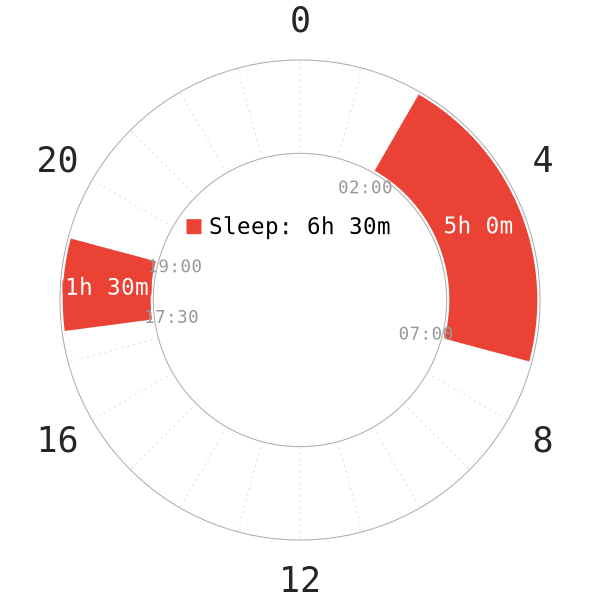
Over the years there have been a couple successful attempts with this Siesta variant. The main ideas behind this setup are to:
- Allow a long wake gap during the day, which suits 9-to-5 mainstream occupations. This would increase the viability to schedule siesta. A sleeper would have a core at night (albeit much shorter than the usually recommended 7-9h monophasic core), and then a long sleep block to rejuvenate after work.
- The convenience of this schedule would be a lot of wake time around the evening and up to late night hours. The enhanced mobility of scheduling this variant is also satisfying for many lifestyles.
- Those with lower SWS requirements will hugely benefit from this setup, as it allows late bedtime and early wakeup time at the same time. This core can be pushed all the way to ~7:30 PM and ends at 9 PM in another successful example.
- The daytime core being much later in the afternoon suits the natural tendency of longer sleep as SWS peak draws closer.
The disadvantages are:
- Adaptations to this variant are often more challenging than to the default version. Shifting the main sleep way out of the SWS peak will often require strong management of food, exercise and dark period to ensure good quality SWS.
- It may also be socially intrusive in a way that this long daytime sleep may interfere with other commitments after work.
Modified Core Lengths
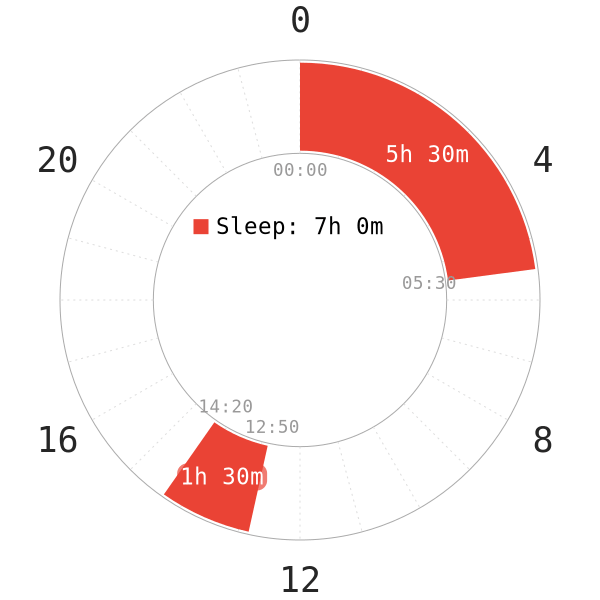
There has been only one notable case that has adapted to a 5.5h night core. Since there is still a small chance of SWS wakes during adaptation or in the case of high SWS requirements, adapting to this variant is not advisable.
The advantage of this core length may benefit high REM requirements. It also buffs the total sleep to a safer amount for ~17-18-year-old individuals. The additional 30m may yield a longer period of wakefulness and the daytime sleep can be delayed further.
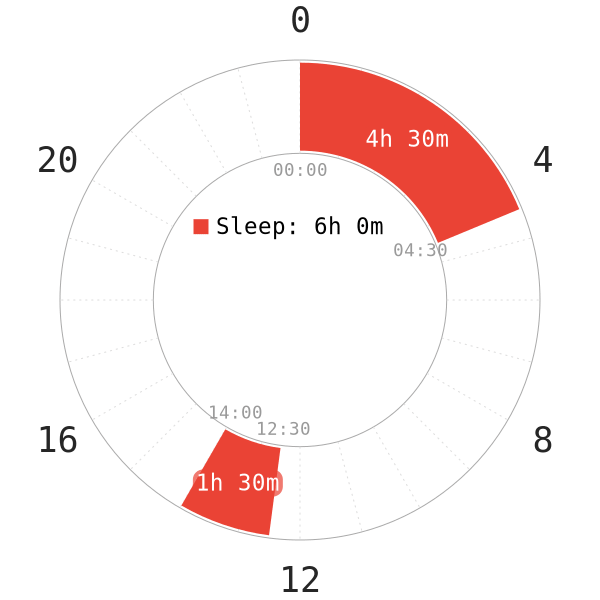
This Siesta variant would line up with the 90m cycle scheduling rule; however, so far it has reported much less success than the standard version. It is likely that people with slightly lower monophasic requirements (e.g, 7h) would have a comfortable time adapting to this variant.
However, it is also very possible that after adapting to the default Siesta version, the night core can naturally shorten down to 4.5h; it does not happen very often though. With some amount of extra sleep, it is possible to attempt this version if one wants to rake in a bit more extra time during emergency events.
Night Core Extension
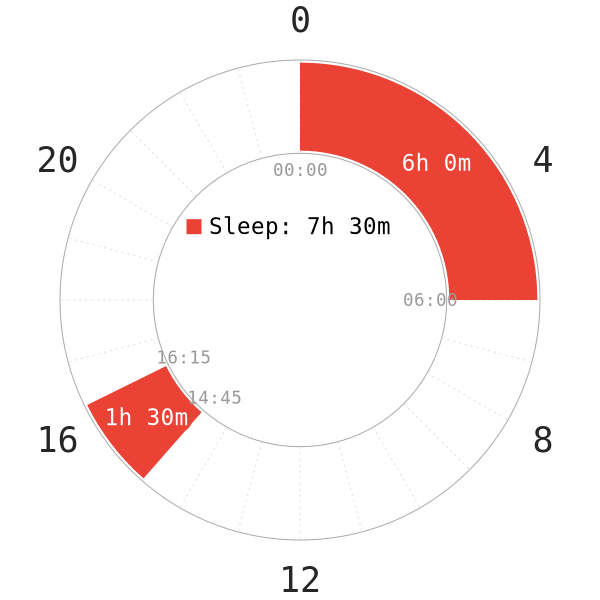
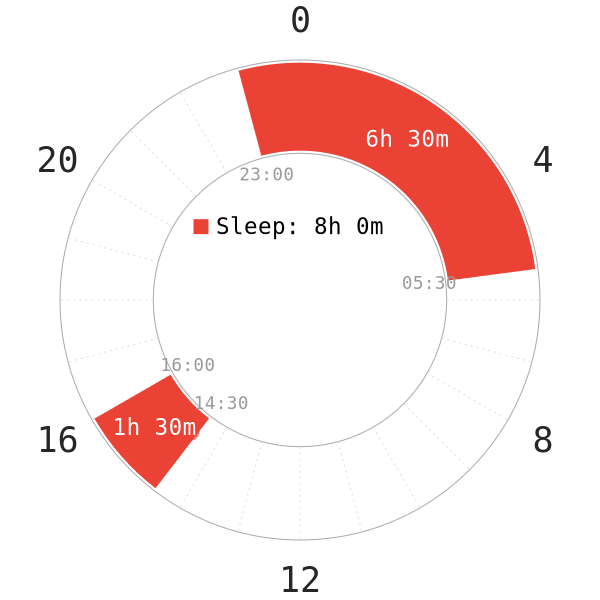
This standard Siesta-extended setup also sees a lot of success, probably the most out of all variants.
- People with physically active lifestyles or are still growing mentally and physically. The adaptation difficulty is much milder than the default version; in addition, extending the night core follows the 90m cycle rule (mostly for convenience).
- It gives a decent amount of sleep reduction for people whose monophasic need is around 8-9h each day. The most common form of scheduling this setup is to have a slightly longer core at night and keep the daytime core as it is.
- The night core can still be further extended, which would raise the total sleep higher. It would also become non-reducing Siesta if desired.
Alternatively, a 6.5h core at night is also viable. This is based on the same core duration of E1, with potentially more room for REM sleep. However, Siesta-extended does not have much reported success with a 6.5h night core up to now.
Daytime Core Extension
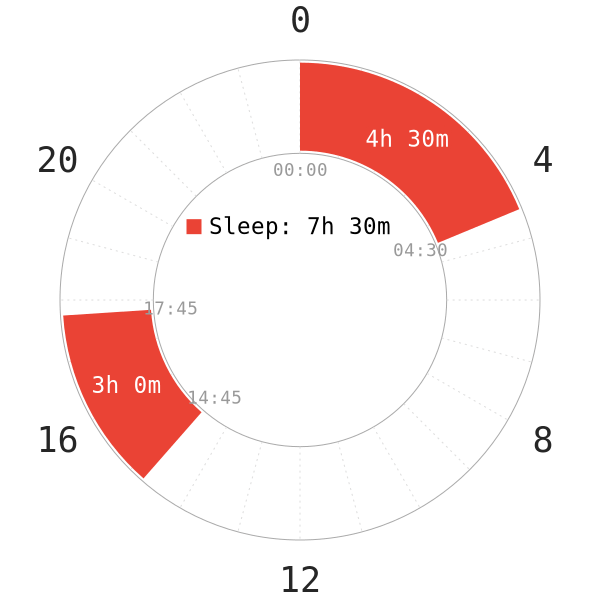
Contrary to the first version of Siesta-extended, this version surprisingly scores some successes thus far. However, it has a stranger distribution of sleep that looks almost like Segmented sleep.
- Sleepers who would resort to this variant likely have work hours at night of some sort, and other commitments in the evening.
- The night core is often cut short, hence the extension of the daytime core by a full cycle.
Ideally in this setup, the dark period would start 1.5-2h before the night core, and resume until ~1.5-2h after the night core to stabilize the circadian rhythm. Without proper dark period management (e.g, shift work, rotation work hours), it is tremendously difficult to make this variant work.
Shortened Daytime Core/Non-reducing Siesta
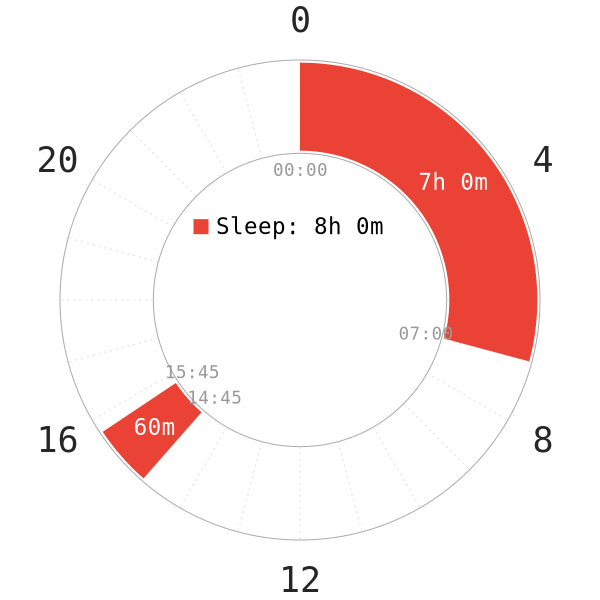
A 60m sleep block is usually discouraged for attempting under most, if not all, polyphasic patterns. However, under non-reducing condition, it can be natural to wake up after 60m rather than a full 90m core.
There has been research on 60m sleep under this condition; a couple of polyphasic sleepers over the years also naturally fall back to this seemingly “odd” sleep duration.
There are certain reasons why a 60m duration would work here.
- The 60m sleep duration provides mostly SWS; the sleeper would likely wake up during the transitional light sleep stage, before the usual REM sleep block would enter. Under non-repartitioned sleep, all sleep cycles follow the regular order: NREM1-NREM2-SWS-NREM2-REM.
- The body at this point has completed the required amount of vital sleep in the day and naturally wakes up; there is no need to compress the core sleeps.
However, outside of non-reducing condition, a 60m sleep block should not be in the schedule from the start.
Other boons include:
- Sleepers do not have to confine to a specific duration of daytime core length. Any duration is fine as long as it’s no shorter than ~50m (to differentiate with E1); the daytime sleep can be as long as ~2h.
- There is a lot of flexibility in scheduling, and heavily favors natural wakes. For example, a sleeper can have a 60m daytime block one day, and ~80-90m core the next day. It is also not a requirement to sleep at the exact same hours everyday for both sleeps even when adapting.
- The goal is to ensure there is no sleep reduction from monophasic baseline to get as much productivity during the day as possible. This can be helpful for events or circumstances that require sharp decision-making and focus. It is often a good idea to have ample rest before an important exam; siesta sleep is capable of accommodating that process effectively.
- Non-reducing siesta is very suitable or even natural for teenagers who are still growing.
Lifestyle Considerations
Research
Interested in learning more about the peer-reviewed research on the Siesta schedule? Click this link to learn more.
Other Assessments
Siesta sleep has long been a golden sleep schedule due to its prevalence and astoundingly well-rounded core sleeps. However, Siesta is not without downsides.
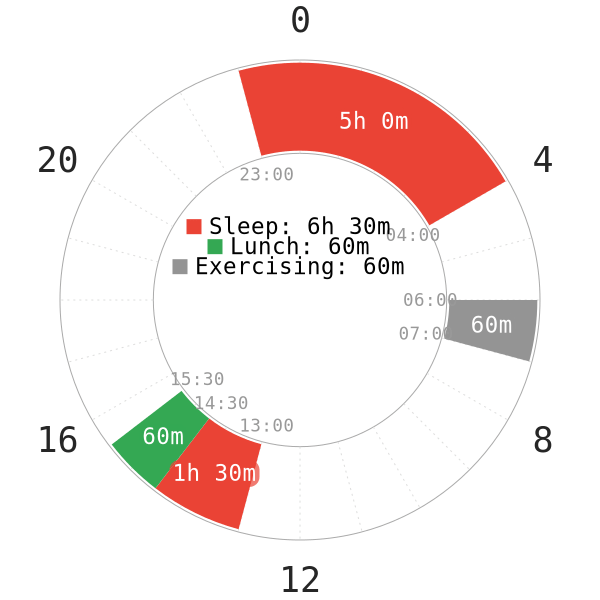
- Due to the hectic lifestyles today, managing a daytime core is very difficult. This in return decreases the popularity of Siesta as it is only popular mostly in siesta-alike cultures. Overall, it pales in comparison with its counterpart E1. However, work-from-home or flexible school/work hours can enable the Siesta daytime core to put in work.
- Food time should be properly scheduled in relation to the daytime core on any reducing versions. Food consumption should be right after or a few hours before the core to ensure its quality. However, there is more leeway in scheduling meals with the daytime core on extended and non-reducing versions, since total sleep is high enough.
Bonus Utilities
Over the years, a lot of polyphasic sleepers have attempted Siesta, despite its inherently disadvantageous daytime core compared to the daytime nap of E1; they have enjoyed their success regardless. After adaptation, the whole schedule can become flexible by flexing one or both core sleeps with small increments.
Most notably, Siesta is a friendly schedule for sickness. Humans sleep for longer periods in a row when severely sick; with extended core sleeps on Siesta, it starkly reminds of the non-reducing Siesta version. Both core sleeps last for much longer than usual as a demand for cognitive and physical recovery from sickness.
Being a holistically comprehensive schedule, Siesta is one of the best polyphasic schedules that can meet many critical well-being requirements. If daily scheduling would give room for it to shine, Siesta would be one of the most simple yet effective polyphasic schedules.
Main author: GeneralNguyen
Page last updated: 8 April 2021
